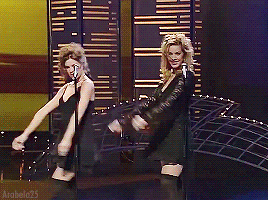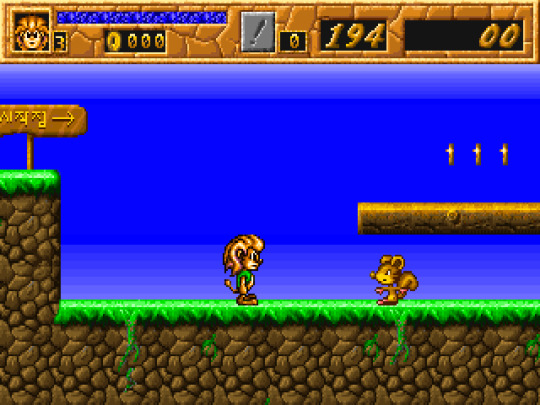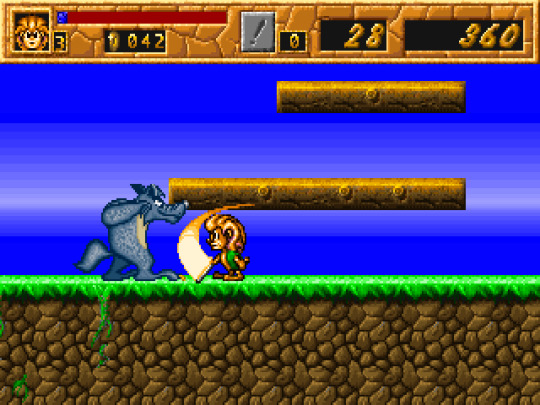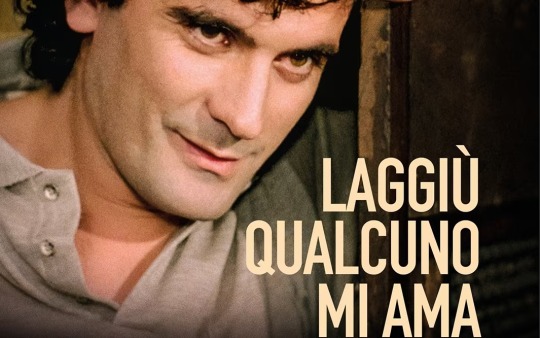#esc 1994
Text
Eurovision Fact #466:

For a majority of Finland's time in the Eurovision Song Contest, the nation has opted to sing in Finnish.
The nation sang exclusively in Finnish until 1973, when Marion Rung's 'Tom Tom Tom' brought English language songs into the mix. This was due to the fact that 1973 saw changes to the contest's language rules, allowing all participants to sing in any language of their choosing.
For four straight years, the nation only sent songs that were in English, but this streak was ended by the reintroduction of the language rules allowing nations to only sing in their national languages. Thus, the nation sang in Finnish (and Swedish once) until 1994.
However, the English included in CatCat's 'Bye Bye Baby' was simply the song's title repeated as a chorus.
Finland took a bit of a break from the Eurovision Song Contest after 1998, but when they returned, the language rules were no more, and thus began a streak of English language songs from 2000 to 2007.
After 2008, the nation sang in Finnish only four times, and tried their hand at singing in Swedish once more as well.
Käärijä's 2023 song 'Cha Cha Cha' marks the first time in eight years that Finland sent a Finnish language song to the contest, and it's the most successful Finnish language song in the history of the contest.
[Sources]
'From 'Pump-Pump' to 'Cha Cha Cha': Finland's vibrant Eurovision history,' Eurovision.tv.
'Finland in the Eurovision Song Contest,' Wikipedia.org.
Luxembourg 1973, Eurovision.tv.
London 1977, Eurovision.tv.
CatCat - Bye Bye Baby HQ, YouTube.com.
Finland, Eurovision.tv.
#esc facts oc#eurovision#eurovision facts oc#eurovision song contest#esc#finland#esc 1973#Marion Rung#CatCat#esc 1994#esc 2023#Käärijä
108 notes
·
View notes
Text
Dublin 1994 - Riverdance
youtube
It's almost necessary when talking about Dublin 1994 to mention the interval act.
Up to this point, interval acts have been some local song and dance, maybe some comedy intended to kill time while the jury votes are counted and verified and telecommunication links can be established to all the capitals of Europe. The downtime before the hosts can unveil their super-scoreboard and the whole glory of European friendships and animosities can be revealed.
In a sense, what Ireland chose in 1994 was exactly this. A group of traditional Irish dancers with some novel choreography with a mystical Celtic backing song. On paper this was absolutely nothing out of the ordinary.
But something clicked. The build from having Michael Flatley and Jean Butler doing their solos, to dancing together, to being joined by ranks of synchronised legs moving and tapping simultaneously on a stage was utterly hypnotising. Many remember this Eurovision purely for Riverdance when they can't remember who won or any of the other songs. Riverdance went on to become a trans-Atlantic success story and is one of the rare Eurovision exports that went world-wide almost overnight.
It also meant that from now on every Eurovision was going to have to match that. The interval act was now something to be talked about and anticipated.
The video above (with its amazing subtitles...) is one of the best quality pieces of footage from the 1994 Eurovision and is released not by the EBU or by RTE, but by the Riverdance company themselves. I'm guessing, but I think that the rights to this show weren't managed in the same way that they are today - I'd guess that the success of Riverdance and the rights to this footage may have played a part in the EBU upping their game in that arena - but this is speculation on my part. Let me know if you know more!
#esc#esc 1994#eurovision#eurovision song contest#dublin#dublin 1994#interval acts#riverdance#michael flatley#jean butler
7 notes
·
View notes
Text
happy funky duncy friday jongens
#video#my edits#era's remixes#eurovision#esc#eurovision 2019#esc 2019#eurovision 1994#esc 1994#duncan laurence#funky duncy friday#catcat
3 notes
·
View notes
Text
I was like "Rockstars isn't that bad you guys are just mean"
And i still don't think Rockstars is bad
But i was listening to Rock n Roll Kids and... And anything Rockstars could've done already has been and better
#malik harris#paul harrington#eurovison 2022#eurovision 1994#eurovision song contest#eurovision#esc#esc 2022#esc 1994
1 note
·
View note
Text
I'm old enough to remember Edyta Gorniak's "To Nie Já" like it was yesterday...
0 notes
Text






To Trehantiri (Diri Diri), Kostas Bigalis and the Sea Lovers | Greece, Eurovision Song Contest 1994
5 notes
·
View notes
Text
Fallece Sara Tavares, representante de Portugal en Eurovision 1994
#portugal#sara tavares#1994#rip#dep#rest in peace#eurovision#esc#ieeehrovision#song#video#chamar a musica
12 notes
·
View notes
Text

Storia Di Musica #322 - Spoon, Kill The Moonlight, 2002
Alla cabina del mixer di The Stage Names dei Okkervil River c'era un ragazzo musicista, un batterista per la precisione: Jim Eno. Che all'uscita di quel disco era una sorta di celebrità della musica indie per via del gruppo che aveva fondato, circa dieci anni prima, con il cantante e chitarrista Britt Daniel. Ad Austin infatti agli inzi degli anni '90 fondano un gruppo che prende nome da una canzone dei leggendari Can, il famoso gruppo tedesco della Kosmik Music degli anni '70, che si chiama Spoon (da quel disco meraviglioso che fu Ege Bamyasi del 1972) e che faceva parte della colonna sonora di un film amato dai due ragazzi, Doppio Taglio (Jagged Edge), del 1985. Nel 1994 come duo con musicisti sessionisti incidono le prime canzoni: vanno in un EP, Nefarious (1994) e poi, assodati dalla etichetta Matador, in un LP, del 1996, Telephono, che vende poco ma viene notato da una certa critica come qualcosa di molto interessante. Nel 1997 un nuovo EP, Soft Effects, mostra l'embrione della loro musica futura: poco noisy, una musica geometrica che si rifà alla New Wave più illuminate (i Wire soprattutto) e una passione, soprattutto di Daniel, per Elvis Costello. Durante un concerto del 1996, invitano sul palco Josh Zarbo, bassista tra il pubblico, e finirà per suonare con loro per oltre dieci anni, fino al 2007. Nel 1998 hanno una grande occasione: li mette sotto contratto la Elektra, la leggendaria casa discografica dei The Doors, dei Love, centrale nella musica degli anni '70 negli Stati Uniti: esce persino un disco, A Series Of Sneaks, ma una serie di incomprensioni con il loro referente, Ron Laffitte, porterà ad una distribuzione scadente e persino a scelte produttive non concordate, tanto che la casa discografica li licenzia dopo un solo disco e gli Spoon dedicheranno a Laffitte una suite di sue brani, molto ironici ma potentissimi per la critica nei confronti dei suoi comportamenti, The Agony Of Laffitte e Laffitte Don't Fail Me Now che saranno incluse nella ristampa di A Series Of Sneaks del 2002, quando la band è sotto contratto con la Merge. Una delle etichette più importanti per la musica indipendente crede moltissimo in questo duo, che in tre anni scrive tre dischi bellissimi: Girls Can Tell del 2001 è l'antipasto per il disco di oggi, scelto per il misterioso motivo comune ai dischi di Aprile (che sono sicuro avete ormai capito).
Kill The Moonlight esce il 20 Agosto del 2002. È un disco che fa della semplicità sonora il suo fulcro, che non vuol dire affatto che sia un disco banale: anzi se ne apprezzano le idee, le influenze, le scelte degli arrangiamenti in modo più facile ed incisivo. È un disco che lascia da parte gli stili prefissati, meno dolente di Girls Can Tell, più gioioso e divertente, un omaggio alle loro passioni musicali. Il disco è trascinato da The Way We Get By, che diventerà molto famosa per l'uso in serie cult come The O.C., Scrubs e persino nella colonna sonora di Shameless (e di molti altri film). Il suono è semplice ma variopinto, con addirittura occasionali puntate di fiati, e per la prima volta il fulcro sonoro è di chitarra e pianoforte, quest'ultimo strumento mai usato precedentemente, nei crediti affidato al misterioso Eggo Johanson, in realtà lo stesso Britt Daniel (tra gli altri musicisti, il fido Zarbo e Mike McCarthy alla chitarra, altri due bassisti, Roman Kuebler e John Clayton, Matt Brown al sassofono e Brad Shenfield al Darbuka, che è un tamburo a cesto tipico della musica mediterranea, soprattutto lato africano). Meravigliosi gli intro di Small Stakes, molto rock, e quello quasi dadaista di Stay Don't Go. Someone To Look Foward To è più "sporca" e groove, salendo nei toni alti del canto tanto amati da Daniel. Jonathan Fisk è ritmica e sa di anni '80 (soprattutto nel timbro della batteria di Eno), ed è il più chiaro omaggio a Costello, anche nella tematica del brano (ricordi di bullismo da cortile, religione e politica di destra con "bombe atomiche e rasoi smussati"). C'è anche sufficiente angoscia in brani come All The Pretty Girls Go To The City. Ma è musicalmente che il disco sorprende: sono uno dei pochi gruppi rock indie del periodo che non "abusano" della chitarra ritmica fuzz, ricorrendo alle tastiere, che sono davvero la novità musicale nel loro stile, e anche ai campionatori. Chiude il disco un altro gioiello, Vittorio E., 3 minuti di malinconica e potente "anti-ballata".
Il disco viene osannato dalla critica, e finalmente anche dalle vendite: rientra in tutte le classifiche dei migliori dischi dell'anno 2002, del decennio 2000-2010 e persino nelle posizioni alte delle classifiche specialistiche dei migliori dischi indipendenti di sempre. Diventerà presto uno dei titoli migliori del catalogo Merge, dopo In the Aeroplane Over the Sea dei Neutral Milk Hotel e 69 Love Songs dei Magnetic Fields (li trovate tutte e due nelle Storie Di Musica). Ma il vero boom lo fece il disco successivo per gli Spoon: Gimme Fiction venderà centinaia di migliaia di copie, trascinato da un'altra canzone stupende, I Turn The Camera On, anch'essa usata in serie Tv (Veronica Mars, Bones e persino in una puntata de I Simpson), che segna il successo di una band che ha sempre fatto musica interessante, alla faccia di quel Ron Laffitte che non credette in loro.
15 notes
·
View notes
Text
As we all know right now, käärijä absolutely slayed this year so i would like to introduce some of my favourite finnish esc entries. Btw i won't mention lordi or blind channel here because i think those two are obvious and more known (i do love them, they are my favourites but i want to give attention to some other songs lol)
Anneli Saaristo - La dolce vita 1989. The song has some latin music vibes (as you can probably guess by the name) and is one of my ultimate favourites. Also the song is in finnish and was placed 7th which is actually pretty good for a finnish song.
Cat Cat - bye bye baby 1994. Like previous two, despite the english name, it is in finnish! This song actually didn't place that good (i think it was 22nd) but the song is still very iconic.
Vicky Rosti - Sata salamaa 1987. This is maybe one of the most iconic and known songs in finland, and of course, it's in finnish too! The song's placement was okay i guess (15th i think) but in my opinion deserved more.
Katri Helena - Katson sineen taivaan 1979. Katri is one of the most iconic finnish artists and her song is one of the most beloved songs in finland. Her placement was 14th
Hanna Pakarinen - Leave me alone 2007. Tho the song is in english it is one of my favourites but i tjink her placement was 17th
Honorable mentions:
Erika Vikman - cicciolina 2020. This song actually won the public vote but because our dear jury, it was not sent to esc. But the contest was cancelled anyway so whatever.
Bess - Ram pam pam 2021. The song is actually one of my favourites but as you know rasmus was chosen, and i don't really mind since ukraine was obvious winner (i don't have any problems with that either) but it would have been cool too. +it's in finnish
47 notes
·
View notes
Text
Reon's Adventure (DOS, Family Production, 1994)
Cute Korean platformer. You can play it in your browser here. (May run slowly depending on your browser.)
Controls: arrows, Ctrl, Space, Enter, Esc.
Tips: Ctrl attacks, and if you walk in one direction for long enough, you'll start running.
Here's HG101's page about the developer.




#internet archive#in-browser#dos#dos games#game#games#video game#videogame#videogames#computer game#computer games#obscure game#obscure games#platformer#platformers#platform games#lion#cute#anthro#korea#korean#south korea#south korean#korean games#1994#1990s#90s
15 notes
·
View notes
Text
Eurovision Fact #461:

Poland's best placing came during their inaugural participation in 1994 where they placed 2nd thanks to Edyta Górniak's "To Nie Ja!"
[Source]
Poland, Eurovision.tv.
10 notes
·
View notes
Text
1994 Dublin - Number 1 - Nina Morato - "Je Suis Un Vrai Garçon"
youtube
From the divine to the profane. This is the song that closed the Eurovision song contest in Dublin in 1994, an typically brave internal selection from France. Nina Morato was an new and popular French singer after the release of her first single in 1993. She was selected with this, her own song.
It's a bit different for Eurovision - a dilemma of a song. Should she go back home to her lover or well, in her words 'fuck there are days which are hard'. Yes - swearing at Eurovision - and a hard swear too. It was controversial and it required an EBU ruling. They let it pass. I'm not sure they would have done if it was in English. It uses Pinocchio's line to say that not only is she not your toy, but something highly affirmative about female desire. Behind it all is a highly jangly 12-string guitar giving this something of the 1990s UK indie-pop feel.
Added to this controversy, there's Nina's styling which is idiosyncratic, almost fetishistic. Her performance is stagey and distinctly in your face. She tells her musicians to get away at the start of the song as she undergoes agonies and contortions of desire and indecision in front of the audience. It's a polarising song and performance, but I love it. Whenever something this unusual and transgressive pops up at Eurovision it's attention grabbing for the best reasons.
After Eurovision, Nina had three albums released to acclaim, but suffered a great double tragedy in 1997 with the death of her daughter and her partner in devastating circumstances. She has since returned and appeared on stage in the Vagina Monologues among productions as well as touring with her music. She released a fourth album in 2016.
#Youtube#esc#esc 1994#eurovision#eurovision song contest#dublin#dublin 1994#france#nina morato#pinocchio
2 notes
·
View notes
Text
happy funky duncy friday jongens
#video#my edits#era's remixes#eurovision#esc#eurovison 2019#esc 2019#eurovision 1994#esc 1994#duncan laurence#funky duncy friday
2 notes
·
View notes
Note
🔍, 🤔 and ⭐️ for the music asks!
Girls and Boys – Blur
🔍- how did you find the song?
Honestly, I have no idea! It came out in 1994, so it’s kind of always been there I guess. But I refound it a few years back on one of those Just Dance style games.
🤔 - why do you like this song?
It's a lot of fun to dance to and sing along with (if you can get the chorus in the right order)!
⭐️ - what are two songs you like that are similar to this one?
DARE – Gorillaz (Damon Albarn again, obviously)
Don’t Upset The Rhythm – The Noisettes
(And of course there’s always Song 2, also by Blur, which Joker Out came out to in the ESC flag parade 😉)
2 notes
·
View notes
Text
LAGGIU’ QUALCUNO MI AMA_MARIO MARTONE
Non so se Mario Martone scegliendo il titolo del film-documentario dedicato a Massimo Troisi, abbia voluto schermirsi, ma quel che è certo è che Massimo Troisi è ancora, a tuttotondo, nel cuore di molti, forse di tutti. In realtà Troisi non appartiene a tutti, appartiene ai figli di un’epoca precisa della nostra storia e, se posso permettermi, appartiene ad un certo mondo politico e culturale. Solo a fatica e, forzatamente, possiamo dire che appartenga a tutti. Troisi non è patrimonio di tutti e in quest’epoca di facili ecumenismi, Martone lo ha voluto sottolineare nel taglio dato al suo magnifico film-documentario, nei prossimi giorni nelle sale. Massimo Troisi non appartiene, prima di tutto , alla cultura di destra, ammesso che esista o sia mai esistita una cultura di destra. Troisi è stato un militante della sinistra, lo è stato da uomo e lo è stato da regista, tanto da non accettare la censura preventiva che la Rai gli aveva imposto prima di un suo intervento al Festival di Sanremo, rinunciando alla partecipazione. Ma Troisi non è ascrivibile, forse proprio perché militante di sinistra, alla pletora di artisti, o pseudo tali, che la retorica italiana arruola nelle fila degli amanti della “napoletanità”, quella più stucchevole e ipocrita. Per fortuna Napoli ha, e ha avuto, grandi intellettuali e grandi artisti, che sanno distinguere ciò che è deteriore per Napoli e tra questi possiamo certo annoverare Mario Martone, Pino Daniele, Paolo Sorrentino, tutti e tre protagonisti, insieme a Troisi del documentario. Martone ripercorre, senza troppi geroglifici intellettuali la carriera di Troisi e lo fa nel miglior modo possibile, quello cioè di non partire da un teorema dimostrato, ma di lasciare che il teorema, o meglio la sua soluzione, si riveli nel finale del film. Ne esce così un ritratto delicato, umano e professionale, del Troisi regista comico e di un suo esistenzialismo a posteriori, condito non dalla insopportabile “napoletanità”, ma da quella sapienza napoletana che è parte importante della cultura italiana; non per nulla, credo, lo stesso Martone in una delle più belle sequenza del film, legge alcune illuminanti pagine di Raffaele La Capria, anch’esso “napoletano non-allineato”. Preziosissime nel racconto filmico le testimonianze di chi con Troisi, ha intrattenuto rapporti umani e intellettuali a cominciare da Anna Pavignano, con la quale, oltre ad aver scritto molti film, ha intessuto una relazione sentimentale, per proseguire con i registi Paolo Sorrentino ed Ettore Scola, il critico Goffredo Fofi, lo sceneggiatore Giuseppe Bertolucci, lo scrittore Francesco Piccolo. Martone racconta e analizza i materiali in compagnia del montatore Jacopo Quadri e l’inizio del film non è lusinghiero e illuminante, per il confronto tra il Troisi regista e personaggio dei film che mette in scena, anche con una certa ritrosia, con il suo scettico e dubitativo alter-ego, e quell’Antoine Doinel che è tutt’uno con gran parte del cinema di un mostro sacro come François Truffaut. Stesse introspezioni (formidabili quelle allo specchio), stessa timidezza, stessa incapacità di vivere il reale e le relazioni interpersonali. Ma se in un mero gioco di rimandi formali i due personaggi si assomigliano, diverso è l’ambiente in cui Troisi-personaggio si trova a vivere ed operare. Ed è proprio qui che è salutare la rottura con il cliché del napoletano, sempre emigrante e mai viaggiatore, come dice una delle più famose battute di “Ricomincio da tre”. Passo passo arrivano tutti gli altri film e la collaborazione con Roberto Benigni nel surreale “Non ci resta che piangere”, per finire con lo struggente “Il postino” del 1994 diretto da Michael Radford e montato da Roberto Perpignani e che, tra l’altro, valse l’Oscar per la miglior colonna sonora a Luis Bacalov. Pochi giorni dopo la fine del film Massimo Troisi morì. Dire però che Troisi lasciò un vuoto incolmabile è dire una banalità, per fortuna (e per bravura), Martine non ne ha fatto un santino partenopeo. Da vedere.

8 notes
·
View notes
Text


Icelandic singer Sigga performs on stage during the 1994 Eurovision Song Contest, at Dublin's Point Theatre on 30 April that year. Sigga sang 'Nætur' which was placed twelfth for Iceland in the contest [Photos: Peter Harding, Des Gaffney]
8 notes
·
View notes